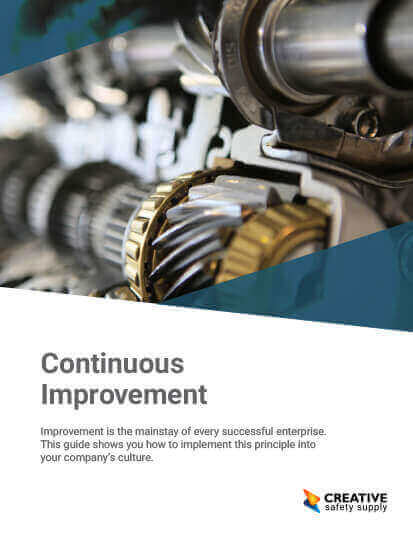
Helping to eliminate waste on an ongoing basis, the principles of lean manufacturing can not only streamline a service but reduce day-to-day running costs moving forward. Inefficiencies can lead to slower operations, failure to meet demand, or poor-quality production outputs; an inconsistent way of working that does not provide value to the customer and can impact brand reputation. By squashing these issues and thus cutting out waste, lean manufacturing can in turn provide an increased budget without having to make large-scale changes to an organization.
The Principles of Lean Manufacturing
1. Value
Being established by the manufacturer or service provider, the value relates to how much a customer will be willing to spend on a particular product or service. To achieve the lowest price for the customer by keeping production costs as low as possible, waste should be eliminated where possible to keep margins aligned. By maximizing profits whilst providing a competitive price point, a unique selling point can be established and lead to an increased market share.
2. Value stream
The value stream relates to the lifecycle of a product, including everything from the resources used for the manufacturing of a product to the waste produced along the way. By analyzing every aspect of the process, improvements can be identified at each stage so underlying problems can be removed and addressed right away. Although many modern manufacturing processes can be incredibly complex, chain alignment will mean experts from across the departments within an organization can work together to establish the best route and streamline the process.
3. Flow
To make a process run as smoothly as possible, a good flow means operations can run with minimal disruptions and as little waste as possible. Removing any barriers will help with the flow of the process and in time speed up timings to mean more output can be created using the same equipment. Without this lean manufacturing principle, additional costs can build up as additional steps are required to ensure that operations can resume after downtime, a time-consuming and costly mistake that can hinder production when it comes to meeting customer demand.
4. Pull system
As opposed to push systems which are commonly used in manufacturing resource planning and determine production quantities in advance, a pull system only produces output when the demand is there. Using sales or production forecasts can be seen as a dated approach, creating inaccurate readings that have a high potential of leading to excess stock that is wasted or not enough stock to meet consumer demand. A pull system sees a workforce work together to establish a strong flow, only working on their task once the previous one is complete, allowing for any holdups to be addressed without affecting the whole operation. This approach avoids the worry of additional storage costs, a negative brand reputation, and disrupted timelines since the whole production line works off current demand to maintain strong profit margins.
5. Perfection
Lean manufacturing requires the constant analysis of existing processes to identify and eliminate any issues that exist within an organization. By aiming to achieve perfection when it comes to production, a business can continue to grow and stay ahead of its competition. This principle links into the Kaizen model, which was created by Kiichiro Toyoda, the founder of Toyota Motor Corporation, and refers to the continuous strive for improvements to achieve a zero defects operation. Successfully implementing this principle, requires ongoing measurement so key metrics such as production output, cumulative flow, and lead times need to be tracked and any issues addressed, creating meaningful changes that can continue to push the company forward.
Implementing Lean Manufacturing Methods
Many directions can be taken when it comes to lean manufacturing, with different organizations seeing improved results from different methodologies that work best for the nature of their business. Continuous improvement can set the basis, with smaller changes having the power to create big differences without causing interruptions to exist processes. Adopting a flexible work approach will allow for better decisions to be made, considering factors such as load leveling, waste removal, production flow, and supplier relationships which all have an impact on the output. Another area that should be regularly analyzed is automation, considering any advancements in the industry which could contribute to a zero defects workplace.
There are two main ways of implementing lean manufacturing. The standard method focuses heavily on the definition of lean and strives to eliminate waste by identifying the main causes, looking to enhance quality while speeding up production times. The second method is often referred to as the Toyota Way, looking more into the workflow than waste. Although the end goal remains consistent, this method looks at the systems which in turn cuts out waste, but through simplifying the overall structure, a more logical approach for more complex processes.
Similar How-To's
- How to Establish the Kaizen Model
- How to Improve Quality Assurance
- How to Implement Kanban
- How to Use a Pull System
- How to Achieve Zero Defects
- How to Get Started with Six Sigma
- How to Standardize Workplace Processes
- How to Get Rid of Waste
- How to track Kanban Metrics and KPIs


